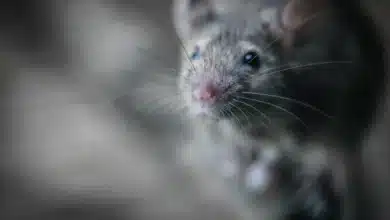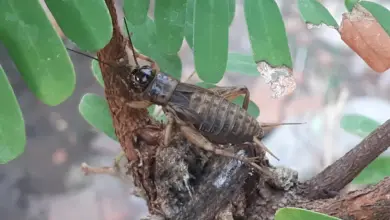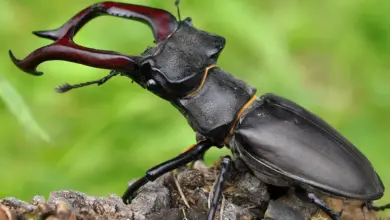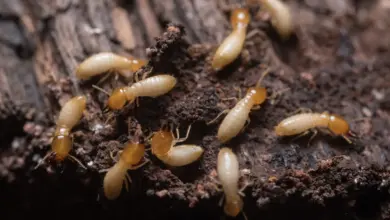When dealing with household pests, it’s important to know the differences between seemingly similar bugs. Two common culprits are the spider beetle and the bed bug. In this article, we will discuss the key differences between these two insects to help you identify and tackle pest issues in your home.
Spider beetles are generally 2 to 5 mm long, oval or cylindrical, long-legged, and brown in color. They infest stored products and have a superficial resemblance to spiders, hence the name spider beetles. On the other hand, bed bugs are small, flat, parasitic insects that feed on the blood of humans and animals while they sleep. These reddish-brown pests range from 1mm to 7mm in size bed bugs.
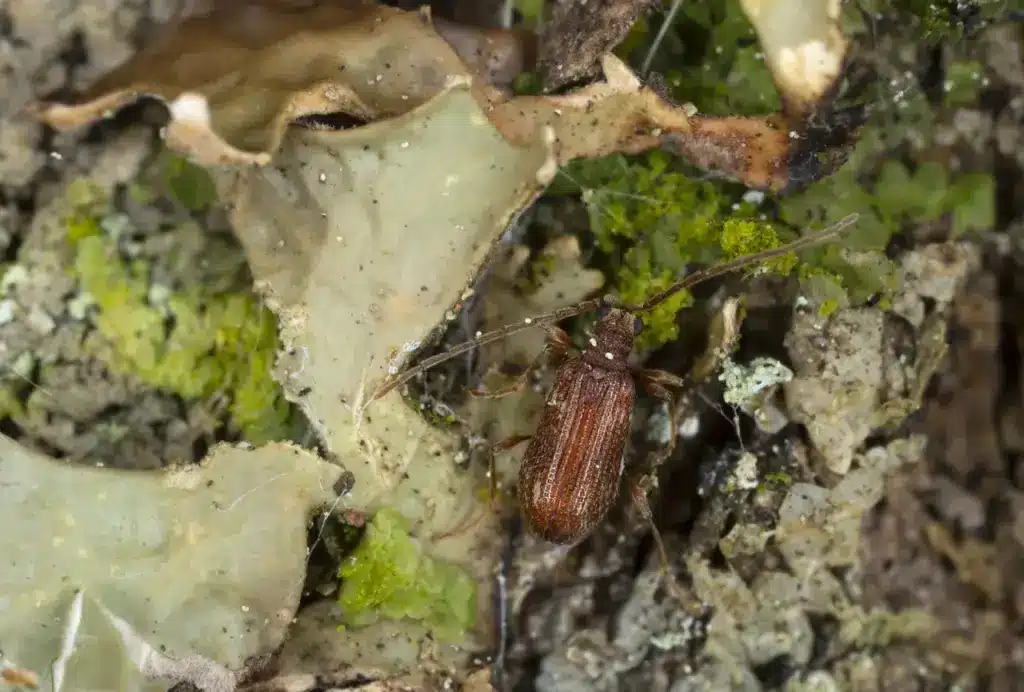
While both spider beetles and bed bugs can cause distress and inconvenience, it’s important to note that, unlike bed bugs, spider beetles do not feed on blood and do not transmit diseases. Knowing the differences between these two pests will help you take appropriate measures to control and prevent infestations in your home.
Meet the Pests
Bed Bugs
Bed bugs are small, flat, parasitic insects that feed on human and animal blood while they sleep. They are reddish-brown in color, wingless, and range from 1mm to 7mm in size source. You can often find them in seams of chairs and couches, between cushions, and in the folds of curtains source.
Their life cycle consists of several stages such as eggs, nymphs, and adult bed bugs source. Bed bug infestations can be challenging to deal with, and prevention is key.
Spider Beetles
Spider beetles, on the other hand, are not parasitic insects. Instead, they feed on a variety of food sources, including grains, seeds, dried fruits, and more. They have a round, shiny appearance, and depending on the species, their color can range from reddish-brown to black.
Here’s a comparison table highlighting the differences between the two pests:
| Feature | Bed Bug | Spider Beetle |
|---|---|---|
| Size | 1mm to 7mm | Varied by species |
| Color | Reddish-brown | Reddish-brown to black |
| Feeding | Blood | Grains, seeds, dried fruits |
| Parasitic | Yes | No |
In summary, while both bed bugs and spider beetles share similarities in size and color, their feeding habits and impact on humans differ significantly. Being familiar with their characteristics can help you identify and address any issues related to these pests.
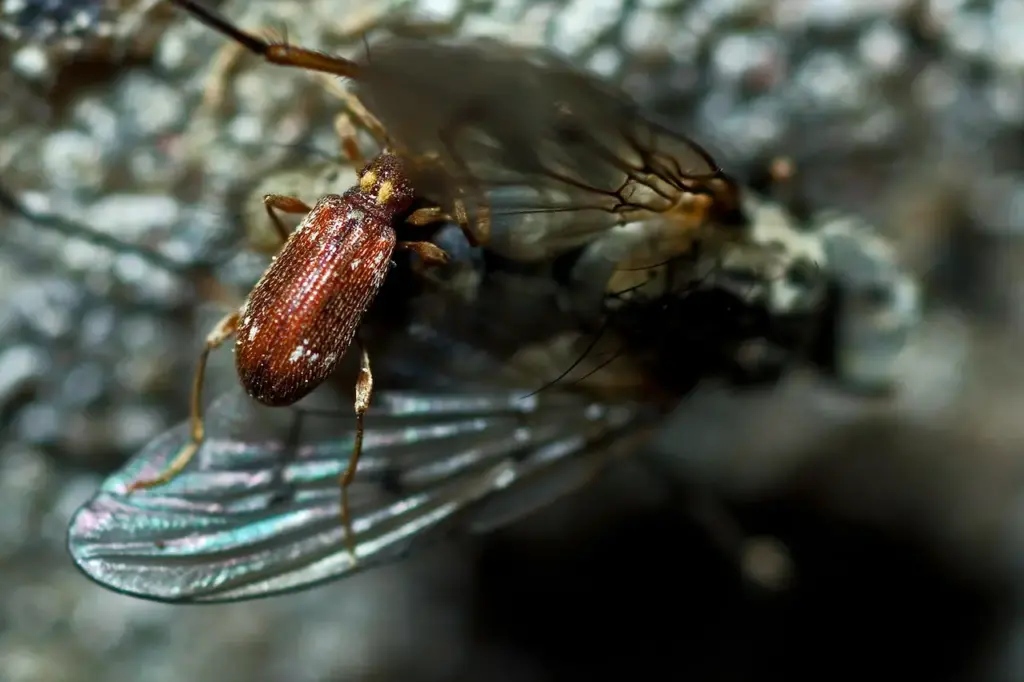
Physical Differences
Size and Shape
Let’s compare the size and shape between spider beetles and bed bugs. Spider beetles range from 1.5mm to 3.5mm in size, while bed bugs are usually between 1mm and 7mm in length. Spider beetles have a more oval-shaped and hunch-backed body, while bed bugs are flat and oval source. Here’s a quick comparison table for easier understanding:
| Feature | Spider Beetle | Bed Bug |
|---|---|---|
| Size | 1.5mm to 3.5mm | 1mm to 7mm |
| Body Shape | Oval-shaped, hunch-backed | Flat, oval |
Color and Texture
Now, let’s explore their color and texture. Spider beetles have a smooth and shiny appearance. In contrast, bed bugs have a tad more textured skin and appear reddish-brown in color. Here are the key features of their physical appearance:
- Spider Beetles:
- Smooth and shiny
- Bed Bugs:
- Reddish-brown color
- Slightly textured skin
Understanding these differences in size, shape, color, and texture will help you better identify whether you’re dealing with a spider beetle or a bed bug in your home.
Habitat and Infestation
Common Infestation Sites
Spider Beetles
Spider beetles prefer to infest areas that are dark and damp. Some common infestation sites include:
- Basements
- Attics
- Crawl spaces
- Food storage areas
They typically feed on dead insects, grains, and seeds, so they are likely to be found in these types of habitats.
Bed Bugs
Bed bugs, on the other hand, prefer to live close to their food source – humans and animals. They tend to hide in narrow spaces and small cracks. Common infestation sites for bed bugs include:
- Seams of mattresses
- Furniture, especially upholstered furniture
- Cracks on walls and floors
- Electrical outlets
They can be found in homes, hotels, and other places where people sleep.
Geographic Distribution
Spider Beetles
Spider beetles are found in various parts of the world, including North America. Their distribution is not limited to a specific region, though they are more common in temperate and tropical regions.
Bed Bugs
Bed bugs are also found in North America, as well as in other parts of the world. They are known to be a widespread problem and have experienced a resurgence in recent years. They can be encountered in almost any inhabited region, including urban and rural areas.
| Spider Beetles | Bed Bugs | |
|---|---|---|
| Habitat | Dark and damp spaces | Close to human sleeping locations |
| Examples | Basements, attics, food storage | Mattresses, furniture, cracks |
| Region | Temperate and tropical regions | North America, worldwide distribution |
By understanding the differences in habitat and infestation sites, you can better identify the pests in your home and take appropriate measures to control them. Remember, spider beetles are more likely to be found in dark, damp spaces, while bed bugs tend to be found in sleeping areas and hiding in cracks and seams.
Behavioral Patterns
Feeding Habits
Spider beetles and bed bugs have quite different feeding habits. Spider beetles are foragers that mostly feed on animal-derived sources like feathers, fur, and dried insects, as well as cereals, grains, and other stored food items. They typically explore different places to find food and are scavengers in nature.
On the other hand, bed bugs are nocturnal and have a diet that exclusively consists of blood from humans and animals. They are not foragers but instead rely on their host for meals. Bed bugs are most active at night, when they can feed on their host while the host is sleeping.
Reproduction Patterns
The reproduction patterns of spider beetles and bed bugs also differ significantly. Spider beetles multiply by laying eggs, which are usually found around their food sources. They can have multiple life stages, ranging from eggs to larvae, pupae, and then adult beetles.
In contrast, bed bugs reproduce through a process called traumatic insemination. Female bed bugs can lay hundreds of eggs during their lifetime, and like spider beetles, they also go through various life stages. Bed bugs progress from eggs to nymphs, shedding their skin in each of their five growth stages before becoming adult bed bugs.
| Characteristics | Spider Beetles | Bed Bugs |
|---|---|---|
| Feeding Habits | Foragers, scavengers | Blood feeders, nocturnal |
| Reproduction | Lay eggs near food sources | Traumatic insemination |
| Life Stages | Eggs, larvae, pupae, adults | Eggs, nymphs, adult bed bugs |
In summary, spider beetles and bed bugs exhibit distinct behavioral patterns in their feeding habits and reproduction. While spider beetles are foragers feeding on various items, bed bugs specifically feed on blood in a nocturnal manner. Furthermore, their reproduction methods are quite different, with spider beetles laying eggs and bed bugs using traumatic insemination.
Signs and Symptoms of Infestation
Bite Identification
When it comes to spider beetle bites, you’ll notice that they are generally non-existent as they do not bite humans. Conversely, bed bug bites can be easily identified by clusters or straight line patterns present on your skin. The appearance of these bites varies depending on your individual allergic reaction, ranging from small, red, raised bumps to larger red welts. Pay close attention to exposed skin areas, such as your arms and legs, as they are commonly targeted by bed bugs while you sleep.
Physical Symptoms
Victims of bed bug bites may experience:
- Itching
- Redness
- Swelling
However, some may develop more severe reactions, leading to the formation of:
- Hives
- Blisters
- Fever
For those with allergic reactions to bed bug bites, medical attention may be necessary.
Please note that physical symptoms from spider beetle infestations are not an issue considering they do not bite humans. However, if you still suspect either a bed bug or spider beetle infestation, thoroughly inspect for signs discussed above and consider professional pest control assistance to eliminate and prevent further problems.
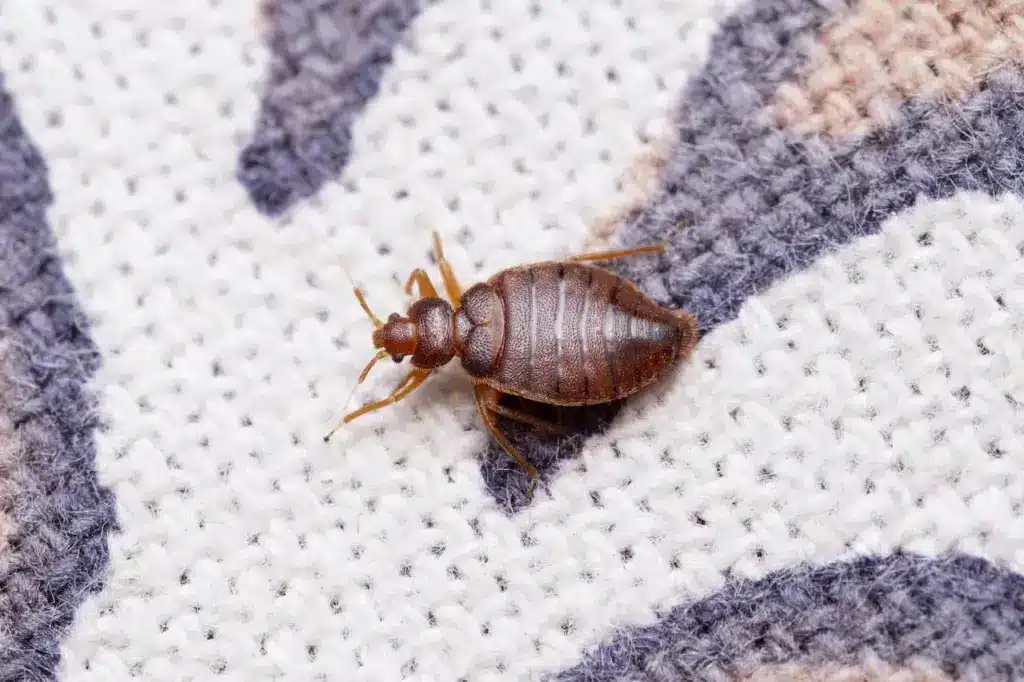
Prevention and Control Methods
Household Tips
Inspect and Clean Regularly: You should routinely inspect your home for signs of spider beetles or bed bugs. Focus on areas where they can hide, such as bedding, furniture, and carpets. Remember to clean these places thoroughly, with special attention to cracks and crevices. For example, use a stiff brush to help dislodge any eggs or bugs from seams and folds in your mattress.
Vacuum Frequently: Keeping your home clutter-free and vacuuming regularly can help prevent infestations. Vacuum your floors, rugs, upholstered furniture, bed frames, and other areas where either pest might be present. Don’t forget to change the vacuum bag after each use, sealing it in a plastic bag, and disposing of it outside the house. Here’s a guide on how to vacuum against bed bugs.
Use Traps: You can try using traps to catch spider beetles and bed bugs. For bed bugs, consider using DIY traps, which often involve two containers with a slippery powder inside to prevent bugs from escaping. For spider beetles, sticky traps may be an effective method.
Professional Services
Pest Control Services: If your infestation seems overwhelming, it’s best to call professional pest control services. They have the experience, knowledge, and equipment to deal with both spider beetles and bed bugs effectively. Experienced technicians can identify the type of infestation and recommend tailored solutions, whether it’s a chemical or non-chemical treatment.
Chemical Treatments: Professionals may use pesticides for controlling infestations. The EPA lists approved pesticides for bed bug control, but make sure the pest control service you choose follows safety guidelines. Remember that some chemicals may not be suitable for use around children or pets.
Heat and Cold Treatments: Both spider beetles and bed bugs are susceptible to extreme temperatures. Pest control services might use heat treatment by raising room temperatures to a level that kills these pests, or they could opt for cold treatment by freezing infested items. Either method can be highly effective when done correctly by professionals.
Impact on Humans and Pets
Health Risks
While both spider beetles and bed bugs can be a nuisance, they present different health risks for you and your pets. Bed bugs are known to feed on human blood, typically biting exposed skin such as your neck, arms, and face while you sleep. Their bites can cause itching, redness, and swelling. However, it is important to note that bed bugs do not transmit diseases.
On the other hand, spider beetles do not bite humans or pets, as they prefer feeding on stored food products such as grains, seeds, and dried fruits. Therefore, they do not pose any direct health risks.
- Bed bugs:
- Bite humans and pets
- Cause itching, redness, and swelling
- Do not transmit diseases
- Spider beetles:
- Do not bite humans or pets
- No direct health risks associated
Possible Damages
Bed bugs and spider beetles can both cause damage to your belongings, but in different ways. Bed bugs tend to hide in places like your sofas, mattresses, and bed linens, leaving fecal stains, shed skins, and eggs behind. Their presence can cause anxiety and insomnia, leading you to spend time and money on pest control measures.
Spider beetles, however, are more likely to damage your stored food products. If they infest your pantry, they can contaminate food items and cause financial losses by forcing you to throw away affected food.
| Bed Bugs | Spider Beetles | |
|---|---|---|
| Damages | Sofas, mattresses, bed linens | Stored food products |
| Health risks | Bites, itching, redness, and swelling | None (do not bite humans or pets) |
